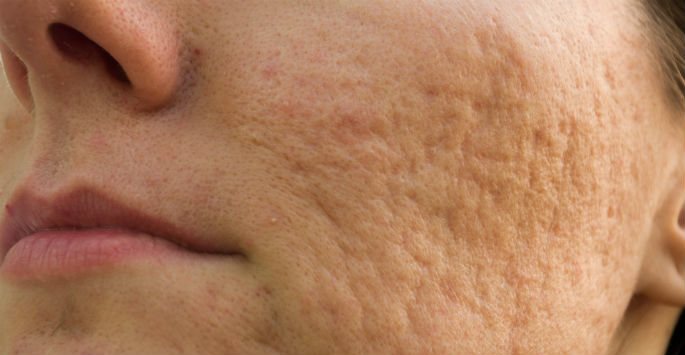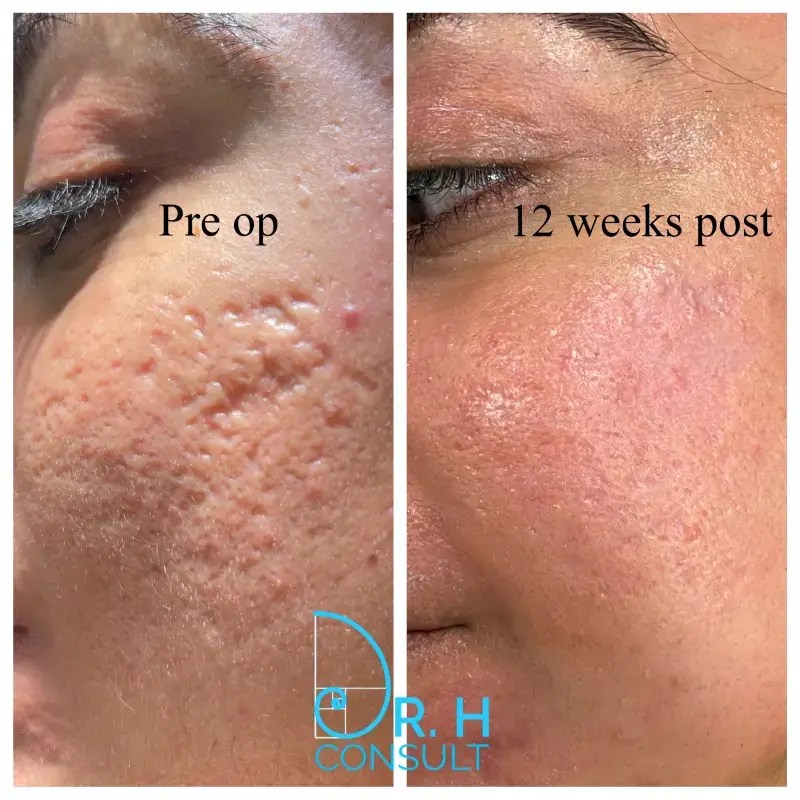Targeted Acne Scars Treatment: Achieve Smooth, Even Complexion
Targeted Acne Scars Treatment: Achieve Smooth, Even Complexion
Blog Article
Discovering Skin Problem: Recognizing and Treating Acne Scars for Healthier Skin
Acne marks stand for a significant worry for people seeking to preserve healthy and balanced skin, as they can affect both appearance and self-worth. Understanding the various kinds of marks, from atrophic to hypertrophic, is necessary for determining proper therapy options. While professional interventions like chemical peels and microneedling can be reliable, the significance of customized treatment strategies can not be overstated. In addition, preventative measures play an important function in minimizing future scarring. As we discover these elements, one need to consider just how the ideal technique can cause transformative results.
Comprehending Acne Scars

The body's natural recovery process can cause either atrophic marks, which appear as clinical depressions in the skin, or hypertrophic marks, which are raised and result from overflow of collagen. In addition, the psychological toll of acne scars must not be underestimated; numerous people report sensations of embarrassment, stress and anxiety, and reduced self-worth. This psychological burden can impact social communications and general quality of life.
Resolving acne marks calls for a comprehensive understanding of their development and impact. Understanding of the possibility for long-term consequences related to unattended marks can encourage people to look for proper therapies. Early intervention and effective management methods can substantially boost skin appearance and enhance mental resilience, highlighting the significance of understanding the complexities surrounding acne marks.
Types of Acne Scars
Acne scars can be categorized into unique kinds, each exhibiting special attributes and calling for details treatment strategies. skin rejuvenation treatments. The key kinds of acne scars include atrophic, hypertrophic, and keloid scars

Hypertrophic scars, on the other hand, are increased over the skin degree and are the outcome of too much collagen production during the recovery process. They commonly continue to be within the limits of the initial acne sore. Keloid scars are similar however expand beyond the original injury website, creating larger, elevated areas that can be itchy or painful.
Recognizing these sorts of scars is necessary for selecting ideal therapy options. Different scars may react far better to details therapies, such as laser treatments, fillers, or surgical treatments, stressing the relevance of a tailored approach you can try here to acne scar management.
Recognizing Your Scars
Acne scars usually drop right into 2 classifications: hypertrophic and atrophic marks. These can further be identified into ice-pick marks, boxcar scars, and rolling marks, each exhibiting distinct qualities and calling for different methods for evaluation.
Hypertrophic marks, on the various other hand, are raised and occur due to extreme collagen manufacturing throughout the recovery procedure. Identifying the details features of your scars-- such as size, appearance, and deepness-- is essential for proper identification (acne scars). Additionally, consider the circulation of marks throughout your skin, as this can suggest the seriousness and duration of the acne condition
Involving with a skin doctor can give beneficial understandings right into the nature of your marks, aiding in the distinction in between different types. A comprehensive understanding of your scars will inevitably bring about a much more tailored and efficient therapy strategy, making sure a clearer and much healthier skin.
Treatment Options Available
Recognizing the certain sort of acne scars existing on your skin prepares for checking out effective therapy choices. Common kinds of acne scars include atrophic (clinically depressed), hypertrophic (raised), and post-inflammatory erythema.
For atrophic marks, options such as chemical peels, microneedling, and laser resurfacing are widely utilized. Chemical peels utilize acids to eliminate the outer layer of skin, promoting new cell see post development.
Hypertrophic marks can be treated with corticosteroid injections to squash the mark or laser therapy to reduce inflammation and improve appearance. Silicone gel sheets and stress dressings may additionally assist in taking care of raised marks.
On top of that, dermal fillers can momentarily fill in anxieties from atrophic scars, while medical excision might be proper for extreme instances. Each therapy option has its advantages and considerations, making it necessary to seek advice from with a dermatologist. They can provide individualized referrals based on the type and severity of your marks, in addition to your skin type and general health and wellness.
Tips for Prevention
Reliable avoidance approaches can significantly reduce the likelihood of developing acne scars. Utilizing non-comedogenic items aids stop stopped up pores, which can worsen acne.
Preventing the desire to choose or pop acne lesions is vital, as this can cause deeper skin damage and raise the danger of scarring. Instead, consider making use of a chilly compress or over the counter treatments to decrease swelling and redness.
Sunlight defense is one more important aspect of avoidance; ultraviolet (UV) rays can dim scars and hinder the recovery procedure. Applying a broad-spectrum sunscreen with at the very least SPF 30 daily can shield the skin and advertise even healing.
Last but not least, preserving a balanced diet abundant in antioxidants, minerals, and vitamins sustains skin health and wellness and healing. Remaining hydrated and taking care of stress and anxiety levels can also play a substantial function in reducing acne flare-ups. By implementing these approaches, people can considerably decrease their possibilities of creating acne marks.
Conclusion
Finally, understanding and determining acne marks is vital for effective therapy and achieving much healthier skin. Various kinds of acne scars, consisting of atrophic and hypertrophic scars, require specific interventions customized to individual requirements. Treatment choices range from chemical peels and microneedling to corticosteroid shots, emphasizing the value of speaking with a skin doctor. Additionally, embracing a gentle skin care routine and securing the skin from my response UV direct exposure can significantly contribute to the avoidance of more scarring and overall skin health.
The body's natural healing process can result in either atrophic marks, which appear as anxieties in the skin, or hypertrophic scars, which are elevated and result from overproduction of collagen. They are additional divided into 3 subtypes: ice choice marks, boxcar scars, and rolling marks. Acne marks typically fall right into two classifications: hypertrophic and atrophic marks. These can additionally be categorized right into ice-pick scars, boxcar scars, and rolling scars, each exhibiting distinctive features and calling for various strategies for analysis.
Different types of acne scars, including hypertrophic and atrophic scars, require particular interventions customized to specific requirements.
Report this page